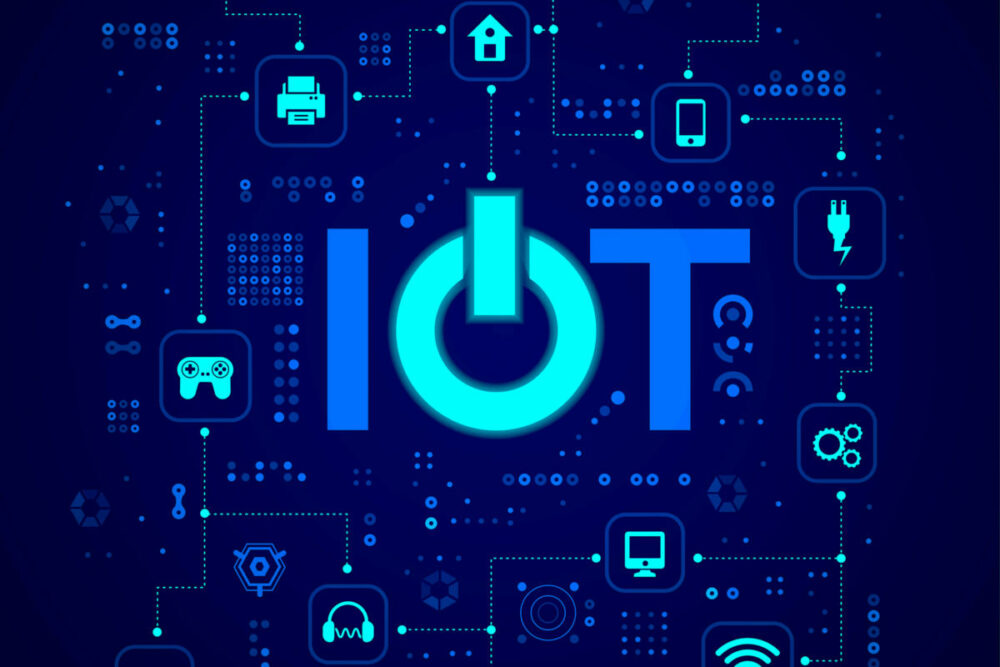
IoT operating systems are designed to consistently perform a certain task for the internet of things devices. As with previous operating systems, the internet of things connects the IoT device to the entire process, including power supply, memory, and integrated systems. However, it is an embedded system used for Internet communication between devices. IoT OS interacts and communicates across the network with various devices, such as a car, digital TV, ATM booth, traffic signal, airplane control, digital camera, point of sale, digital meter, and digital media receiver. As the world evolves for the internet of things, several technological titans are spending heavily on developing embedded IoT systems. Consequently, several IoT operating types (OS) are required. Today, we will review the 15+ best IoT operating systems.
15+ Best IoT Operating Systems
Operating systems are a requirement for the proper running of any IoT project. The architecture of the modern internet of things system is based on cloud computing. Despite the architecture’s limited memory, its performance is exceptional. Some IoT operating systems are quite familiar to programmers.
[lwptoc]1. Windows 10 For IoT
Those familiar with the Visual Studio and Microsoft ecosystems may select Windows 10 for the Internet of Things. This core edition is easy to download and free to use. On the Raspberry Pi 2, however, you cannot run Win32 apps. Windows 10 for IoT is offered in three distinct variants. The ARM architecture-based IoT mobile device is the first. The second component is the IoT core that supports Raspberry Pi and Intel Atom processors. The final IoT type is Windows 10 Enterprise, whose features are predominantly found in desktop apps. Again, however, it is limited to a single app.
2. Contiki
2002 saw the invention of Contiki, an open source IoT operating system. IPv4 and IPv6 are often used for running effectively. With the low-power microcontroller, the device may perform expectations. Contiki supports RPL, 6lowpan, and CoAP wireless standards. Even with a low-speed Internet connection, Contiki is entirely usable.
3. RIOT
When contemplating the name of any user-friendly Internet of Things operating system, RIOT comes to mind. It is a free and open source operating system that supports the vast majority of low-power microcontroller architectures and Internet of Things (IoT) devices. It powers the Internet of Things like Linux powers the internet. RIOT is secure, long-lasting, user-friendly, and compatible with a standard operating system. If you want to think beyond the box, you may use this internet of things operating system because it is compatible with several platforms, including embedded devices. Cortex-M0 -M0+ -M3 -M4 -M7, Cortex-M23, ESP8266, ESP32, MIPS32, MSP430, PIC32, RISC-V, x86, AVR, and ARM7 are the most prevalent Architectures supported by this operating system. Since RIOT is free software, this operating system may be redistributed and modified. The RIOT community developed its library; however, several external libraries with independent licenses exist.
4. Google Brillo IoT / Android Things
The most recent version of Google Brillo IoT is Android Things. Google Brillo is an embedded IoT platform based on Android. The MCU platform is designed for usage with little power and memory to connect to neighboring devices. Well, it supports 32-64 MB RAM, BLE technology, WiFi, Bluetooth low energy, and a variety of other embedded Android-based technologies. Google’s second endeavor is to develop a new Android-based operating system for its comeback to the IoT platform fight. During the Google I/O 2015 Developers Conference in San Francisco, Brillo is introduced as a new IoT operating system. Google Brillo IoT Operating Systems can assist manufacturers of smart appliances to make their products compatible with various things. For instance, it may include changing the light to a smoke alarm. In addition, Brillo is compatible with a range of hardware platforms that are of a lower level.
5. Huawei LightOS
The lightweight characteristic of the real-time kernel-based Huawei LightOS IoT operating systems is well-known. It is compatible with fundamental operating systems’ tasks, memory, type, communication method, and queue components. It also works better in conditions with limited power and memory. Huawei LightOS supports the development of open source IoT ecosystems inside the technology ecosystem for commercial usage and other purposes. The company has partnered with several organizations to provide an open-source development kit and industrial solution. In contrast, it provides developers with a one-stop software architecture to increase development productivity and reduce development needs. 2015 saw the development of the Huawei LightOS by the Chinese technology company Huawei. This IoT operating system’s standard API makes it versatile. It has reduced the additional costs associated with creating IoT devices. Huawei LightOS features the smallest kernel size, 6kb, compared to other operating systems.
6. Apache Mynewt
Apache Mynewt is also a popular Internet of Things operating system with embedded features that you may find appealing. With power, memory, and storage limitations, it can operate for an extended time. This free and open source software’s source code is given under the Apache License 2.0. The 6kb kernel is convenient for microcontrollers such as industrial IoT systems and medical equipment.
7. Snappy Ubuntu Core
IoT-compatible Snappy Ubuntu Core is a secure and open source operating system. Well, It’s a transactional version of Linux OS that runs on a Linux package with a secure level of security. This IoT operating system increased the internet of things twofold. First, using the same kernel, system software, and libraries as traditional Linux, Ubuntu users may develop snaps. As IoT requires less memory, power, and functions than a CPU, its spread of things is modest.
Snaps Ubuntu Core IoT OS’s defining characteristic is its compatibility with desktop and cloud technologies. Snappy is comparable to a software package container. Corruption is restricted to a sandbox; therefore, it is only resistance. So it limits your harm. The vulnerability was routinely searched for. Snappy Ubuntu Core’s cloud administration is commendable due to its efficient cloud server and cloud platform. Snappy Ubuntu Core requires a Raspberry Pi 2 or 3, a microSD card, an Ubuntu Core image, an HDMI display, an HDMI cable, and a USB keyboard.
8. Zephyr IoT OS
The real-time-based, compact IoT operating system Zephyr is one of the best options for the internet of things developers. Linux and Wind River Systems developed an open source IoT operating system using C and assembly code. It is microcontroller-centric and supports many architectures. It supports various IoT platforms, such as Cortex-M33, Cortex-M3, ARM (Cortex-M0, ARC, RISC-V, Nios II, Xtensa, Cortex-M4, Cortex-M23, Cortex-R4, Cortex-R5), x86, and x86-64. Zephyr IoT OS offers a great deal of adaptability and freedom of choice. You may connect IoT devices with a tiny footprint and combine them with cloud computing.
You may connect to any cloud using transport layer security with cloud agnostic. This kernel with a compact footprint is designed for systems with limited resources that can use basic embedded environmental sensors and IoT wireless gateways. The kernel of the Zephyr IoT operating system features multiple scheduling algorithms, AMP, SMP, multiple scheduling algorithms, single address space, and multiple scheduling methods. OS uses Kconfig and Device tree as the configuration system for the internet of things. This real-time operating system is based on CMake, allowing it to be built on Windows, Mac OS, and Linux.
9. Google Fuchsia
Google Fuchsia is another trustworthy IoT operating system the company is developing. Without an official announcement, in 2016, it became popular. Its symbolic significance and hue are magnificent, a new operating system. Pink plus purple equals fuchsia. Chrome OS and Android were both developed by Google. On August 15, 2016, the open source IoT OS Google Fuchsia was released as a member of the Zircon OS family. A microkernel runs this operating system on a low-power device. In addition to the microcontroller embedded system, it runs on various cellphones, desktop computers, and tablets. Some experts believe this IoT OS will soon be replaced with Android.
10. TinyOS
TinyOS can be used if a component-based and embedded wireless sensor network are desired. Open source operating system developed for low-power wireless devices. It is used for sensor networks, ubiquitous computing, smart buildings, cloud computing architecture, personal area networks, and smart meters. The operating system is composed of C code. It is mostly written in Java and shell script. This Internet of Things operating system is beneficial for the network-capable microcontroller. It is suitable for devices with limited resources and a small amount of RAM. It is designed such that a low-power device can run it effectively.
11. Raspbian
The Raspberry Pi is one of the most versatile IoT device platforms. This is a collection of single-board computers. It is a very versatile operating system that may be used as an IoT device. With this IoT OS, you may connect third-party operating systems such as Ubuntu core, Windows 10 core, and OSMC. Well, it may be a suitable option if you want to develop Internet of Things (IoT) projects. Raspbian is adaptable, inexpensive, and robust compared to its IoT market rivals. It offers options for pre-installation, experimentation, and instructional usage. Even though the project is managed using Debian Linux, Fork, and many other Raspberry Pi operating systems can be used.
12. TizenRT
TizenRT is an IoT operating system based on FlOSS and powered by the Linux kernel. This open platform operating system has migrated to consumer devices like as Smart TV, wearables, home kitchen appliances, and several security products. It supports low-end, cost-effective IoT devices. It can traverse your requirements using an LCD button without a display. TizenRT IoT OS is intended to support all types of low-end devices. This lightweight platform is suitable for devices commonly outfitted with Cortex-M/R processors with MPU, a Flash capacity of less than 16 MB, and a RAM of less than 2 MB. This RTOS-based environment model has disadvantages, such as being inferior to a Linux environment and incapable of loading new modules at runtime. It has embraced environments such as POSIX API, Shell, BSD Socket API, and Kconfig build settings to address the issue.
13. Embedded Linux
The Embedded Linux is an internet of things operating system developed for embedded devices and various appliances. However, it uses the same Linux kernel but is distinct from Linux OS. Linux OS is customizable for embedded Linux. This operating system has a lower memory footprint, minimal power requirements, and runs specialized apps. Android is an embedded Linux system designed specifically for smartphones, Smart TVs, wireless routers, Tablet PC, navigation devices, and other consumer app devices. Also useable with navigation equipment, networking equipment, personal video recorders (PVRs), spacecraft flight software, in-vehicle infotainment (IVI), machine control, and industrial automation.
14. Amazon FreeRTOS
Amazon FreeRTOS is a secure real-time IoT operating system that receives upgrades over the air. It contains several demo apps with certified boards. FreeRTOS is a freely available, open source operating system that may be downloaded and modified via GitHub. Because it is licensed under the MIT open source license, it can be used for personal and commercial purposes. There are three types of support for the Amazon FreeRTOS IoT OS, minor, major, and long-term. It is completely useable in an embedded system based on a microcontroller that is easy to use, code, deploy, and maintain. Using this Amazon FreeRTOS operating system, you may securely connect to AWS Cloud and develop any IoT system in the cloud. The IoT OS may benefit the producer of microcontrollers such as connected sensors, security peripherals, and Ethernet controllers. Enterprises may also use the OS to improve their operational and commercial efficiencies.
15. Device OS
Another suitable Internet of Things operating system for your embedded device is Device OS. This simple programming framework enables you to develop any app and run any microcontroller-based device. It is a platform that integrates hardware, software, cloud infrastructure, and communication. You may immediately send OTA updates using a rapid and secure approach. Device OS allows you to execute a function that instructs your device to perform any activity from a distant location. For example, you can remotely send a message to the device cloud and obtain a variable for reading the sensor’s value. Device OS configuration is straightforward; therefore, no proprietary integration is necessary to deploy a remote update.
16. Mbed OS
Mbed OS is among the fastest IoT operating systems for embedded devices. It is a reliable OS that facilitates secure activities. Mbed is a free and open source operating system with all the features of other IoT operating systems. You may connect various devices to Mbed OS, such as a standards-RTOS kernel, middleware for storage and networking, remote device management, based security, and connectivity stacks. Mbed OS has networking, connection, and security stacks specifically designed for the internet. It enables the connection of over seventy cloud, silicon, module, and OEM partners. The Mbed OS API enables the code to be kept clean, simple, and portable, with the added benefit of communication security.
17. Nano RK
Carnegie Mellon University’s Nano RK is an Internet of Things operating system with a real-time architecture. It supports multi-hop networking for wireless sensor networks. Currently, this OS is supported by the FireFly Sensor Networking Platform. It has under 2 KB of RAM and 18 KB of ROM. It supports wireless link layer protocols such as RT-Link, WiDOM, b-mac, U-Connect, and PCF TDMA. Nano RK is advantageous for scheduling based on precedence. It ensures the punctuality and coordination of tasks. This system uses virtual energy reserves due to the limited battery power of NanoRK on the network, wireless node, and Nano-RK CPU and sensor efficiency. With its embedded resource kernel’s (RK) compact footprint, Nano-RK enables timely scheduling and robust functionality.
18. Nucleus RTOS
Nucleus RTOS is one of the best 32-bit and 64-bit embedded real-time operating systems. It is designed for use with industrial, consumer, medical, aerospace, and IoT apps. The most recent release of the Nucleus RTOS IoT OS supports safety certification, power management, the process model, and heterogeneous multicore SOCs. Nucleus RTOS has announced compatibility for the cloud computing platform, Microsoft Azure. This proprietary operating system is compatible with PowerPC, Altera Nios II, Renesas SuperH, Infineon, ARM, NXP, MIPS, TI, and Xilinx MicroBlaze, among others. MQTT, HTTPS, CoAP, and 6LowPAN are supported.
19. NuttX Real-Time Operating System
Operating System for Real-Time NuttX emphasizes a tiny footprint and compliance with industry standards. It supports microcontroller systems ranging from 8 bits to 32 bits. Gregory Nutt published the software in 2007 under the permissive BSD license. Because NuttX OS is a POSIX RTOS, there is no need to learn a new API program. Linux and NuttX have several comparable subsystems. Examples include the audio subsystem, a USB system with USB Composite compatibility, the Virtual File System (VFS), and the Memory Technology Device (MTD). It allows microcontrollers with less than 8KB of RAM and 32KB of Flash to function.
20. Mongoose OS
Internet of Things (IoT) Framework for Firmware Development Mongoose OS is a good operating system that supports microcontrollers with low power consumption and connectivity. This IoT OS aspires to offer a comprehensive environment for operating and prototyping linked devices in addition to development. Another purpose is to reduce the duration and expense of IoT project development. Mongoose OS is an All-in-One Small Business IoT Platform. It collaborates with AWS, Google, Azure, and Watson and features dependable OTA updates. Since 2013, it has supported commercial endeavors. This internet of things OS is licensed under the Apache 2.0 open source license.
The Bottom Line:
After a lengthy debate, you will be pleased with this extensive list of operating systems for the internet of things. It is difficult to determine which is the best. It is contingent upon the needs of the software developers. Nonetheless, if you found my IoT OS endeavor beneficial, please share it with your acquaintances. Thanks for your perseverance in reading.



